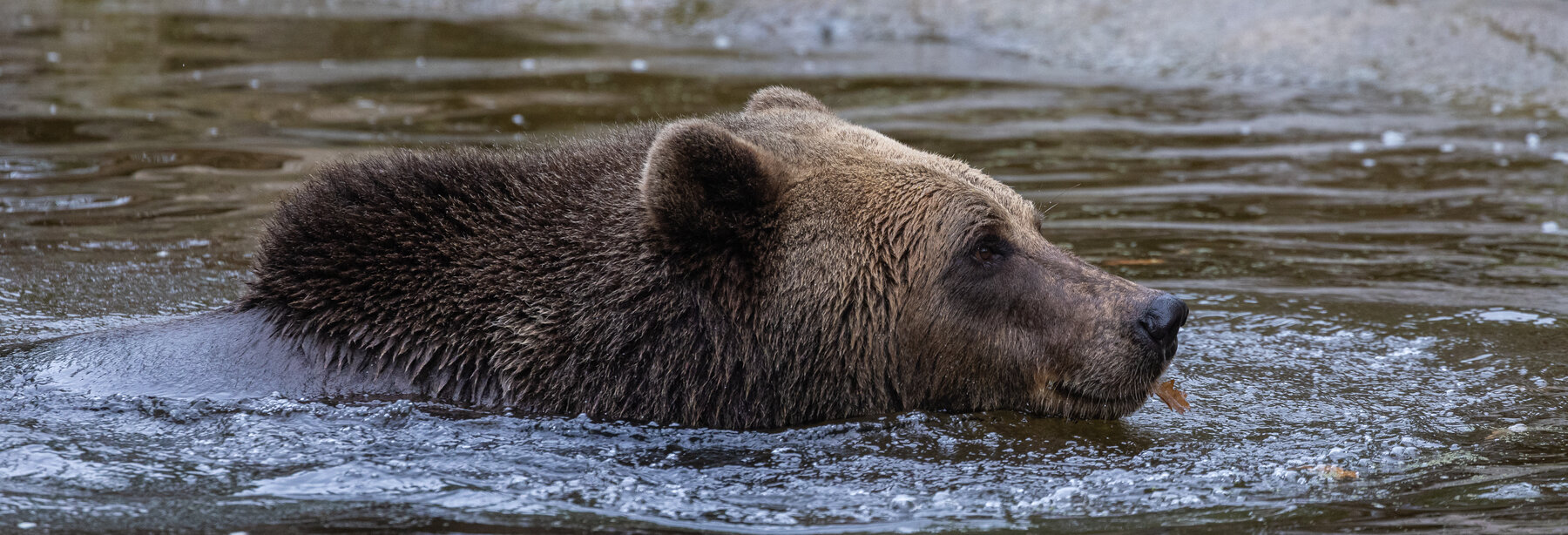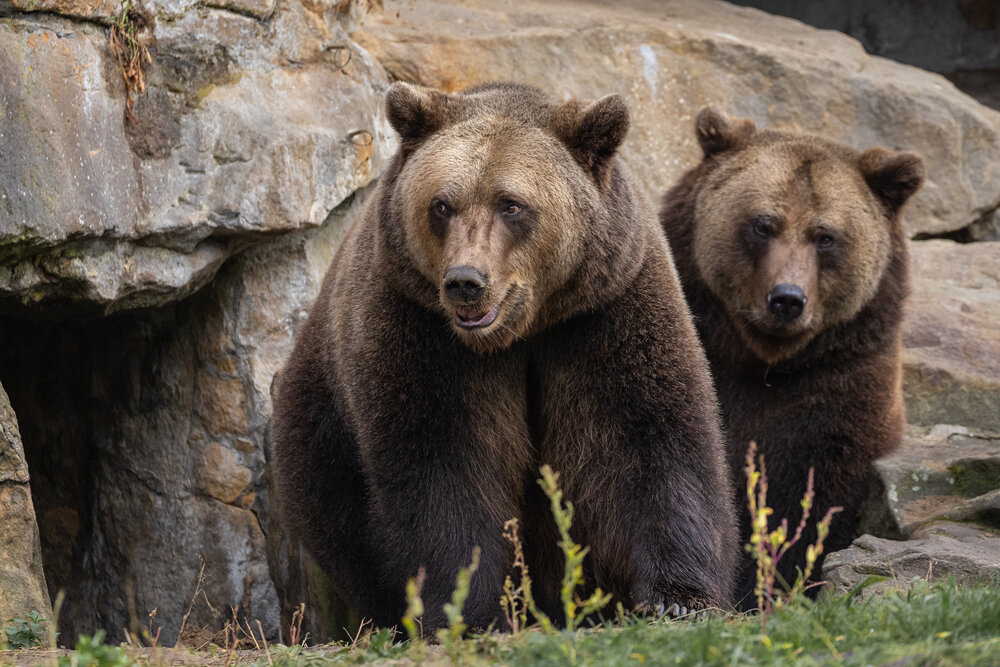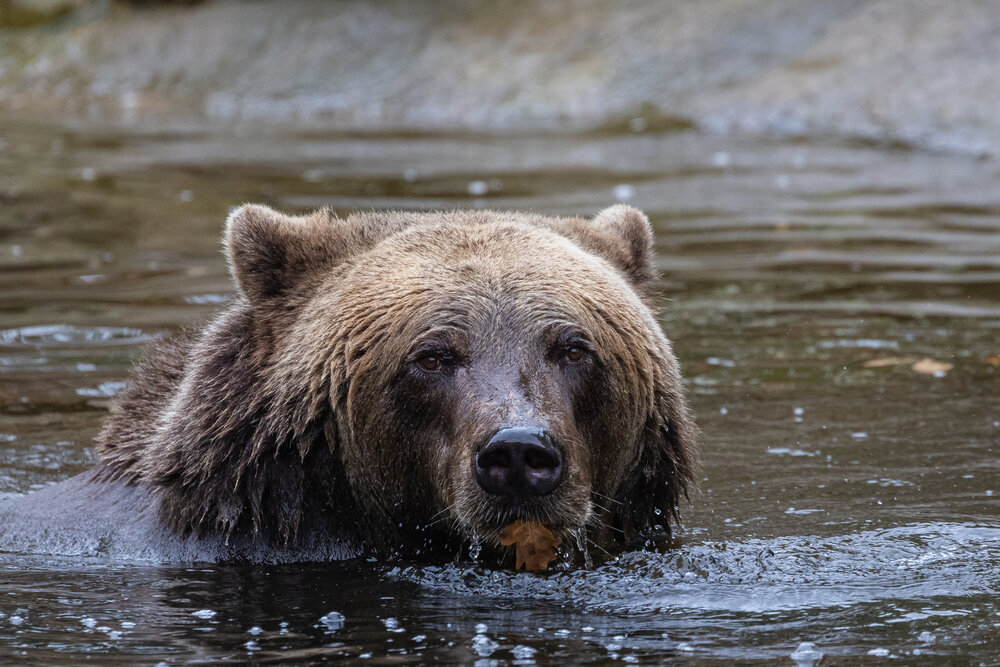
European brown bear
Ursus arctos arctos
European brown bears can’t find enough food in the winter, so they spend the coldest four to six months of the year in hibernation. During that time they go into “energy-saving mode”: their heart rate and breathing slow down and they live solely off fat reserves. If disturbed, however, they may “awaken” with a start.
Good neighbours
Brown bears are not territorial. As their diet is mainly vegetarian, they don’t need their own hunting grounds and will happily share their habitat.
Characteristics
- Origin
Europe and western Russia
- Habitat
forests, steppes, barren mountain landscapes, Arctic tundra
- Diet
berries, fruits, mushrooms, insects, nuts, honey, fish and mammals
- Status
200,000 worldwide
- Size
150cm bis 280cm (shoulder height up to150cm)
- Weight
Male130 to 550 kg, Female 80 to 250 kg
- Gestation period
7 to 9 months
- Achievable age
up to 30 years
Threat Categories of IUCN


Did you know?
Humans only encounter brown bears because we are encroaching on their natural habitat.
These bears were wiped out in Germany in the 19th century.




